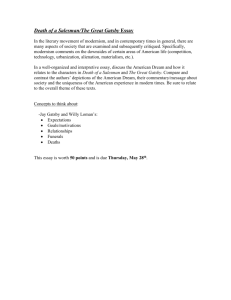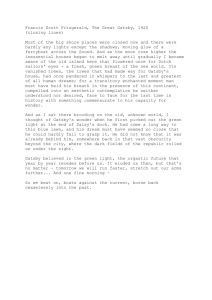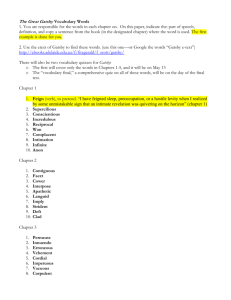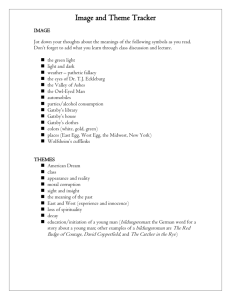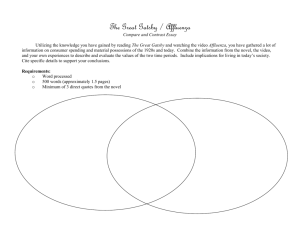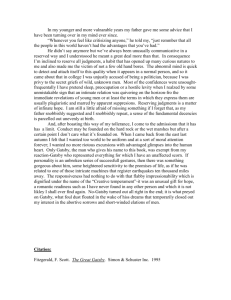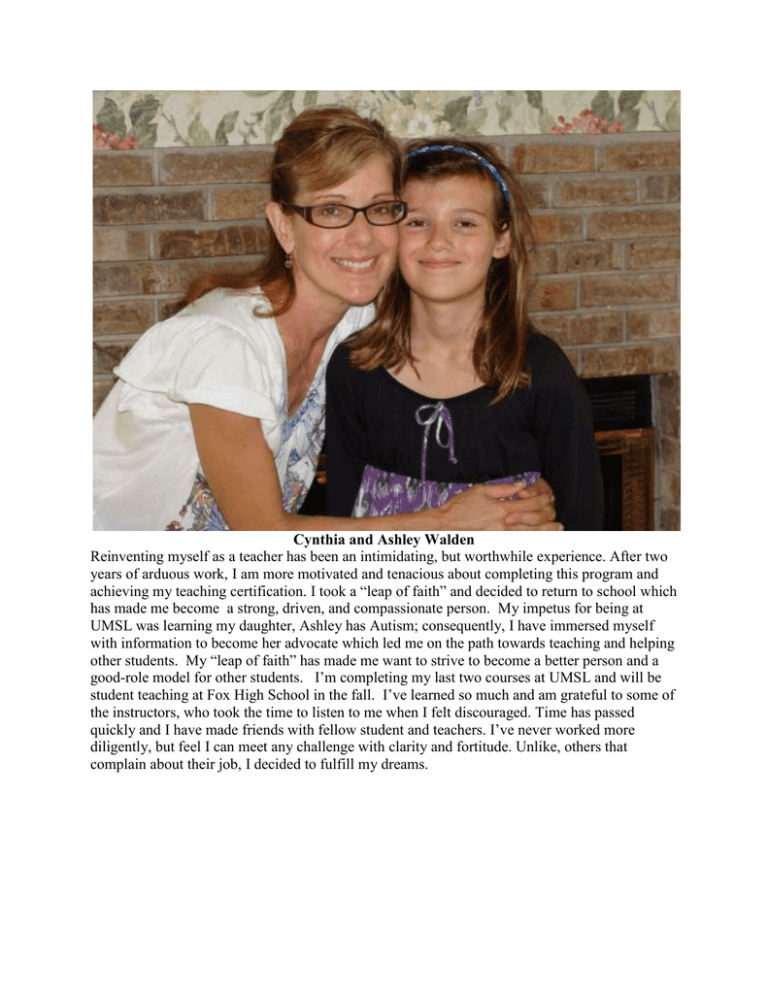
Cynthia and Ashley Walden
Reinventing myself as a teacher has been an intimidating, but worthwhile experience. After two
years of arduous work, I am more motivated and tenacious about completing this program and
achieving my teaching certification. I took a “leap of faith” and decided to return to school which
has made me become a strong, driven, and compassionate person. My impetus for being at
UMSL was learning my daughter, Ashley has Autism; consequently, I have immersed myself
with information to become her advocate which led me on the path towards teaching and helping
other students. My “leap of faith” has made me want to strive to become a better person and a
good-role model for other students. I’m completing my last two courses at UMSL and will be
student teaching at Fox High School in the fall. I’ve learned so much and am grateful to some of
the instructors, who took the time to listen to me when I felt discouraged. Time has passed
quickly and I have made friends with fellow student and teachers. I’ve never worked more
diligently, but feel I can meet any challenge with clarity and fortitude. Unlike, others that
complain about their job, I decided to fulfill my dreams.
Writing has never been an easy task for me and I have to continually work at it daily. Jim Burke
recommends “brainstorming, automatic writing, clustering, and dialogue journals as strategies to
use when writing. I have used these strategies, which work if you are persistent in achieving
success; however, individuals need to be diligent, patient (with yourself) and setting goals.
~Cynthia Walden
“The only purpose of education is to teach a student how to live his life-by developing his mind
and equipping him to deal with reality. The training he needs is theoretical, i.e. conceptual. He
has to be taught to think, to understand, to integrate, to prove. He has to be taught the essentials
of the knowledge discovered in the past-and he has to be equipped to acquire further knowledge
by his own effort.”
~Ayn Rand (Russian born American Writer and Novelist, 1905-1982)
Connotation, Character, and Color Imagery in The Great Gatsby
Junior/Senior Level
Cynthia Walden
Spring, 2010
In common use almost every word has many shades of meaning, and therefore needs to be
interpreted by the context.
~Alfred Marshall
Rationale:
The purpose of this assignment is to discover textual comprehension through the use of
connotative and emotive concepts. F. Scott Fitzgerald’s, The Great Gatsby uses connotative
concepts as he focuses on the textual comprehension of this novel. Words are chosen with
different shades of meaning to captivate the reader’s attention in an expository format and
connect them to discovering associations of color imagery when drawing concrete conclusions to
Fitzgerald’s characters, settings, and plot. In this unit, “I will emphasize how the characters (i.e.
Daisy, Tom, Jay, Jordan, and Others) are not who they appear to be, based on connotative
analysis and color imagery”.
Students will maintain a Color Imagery Journal to document notes on each character which will
enable them to discern who the character really is and not who they seem to be. Without
maintaining a log, a reader can lose focus on the author’s attempt to reveal the real character.
The students will each contribute their perspectives on a selected character and through the
journaling process will arrive at a more accurate picture of who this character really is in Gatsby.
Furthermore, the students will write a summative essay based on reading The Great Gatsby.
They will select a character, journal daily while looking for connotative clues, researching
cultural connotative websites, and interpreting color imagery associations. After each student
arrives at a true, compelling image of their appointed character from the novel, they will have
completed a recursive search (i.e. defining concepts, research, journaling, association, and
personal reflection) on the process and outcome of this exercise.
This exercise provides detailed insight into each character that may have been overlooked
otherwise. The summative assessment will be revealing as students analyze and infer a
character’s true individuality. F. Scott Fitzgerald creatively writes books of complicated
characters and provides the readers with clues into discovering their actual individuality.
Summary:
Over the course of the unit, students will learn to identify and explain connotative and denotative
value of words while reading The Great Gatsby. They will be provided with formative exercises
to help them differentiate between these two concepts. Once, they understand these concepts
they will be introduced to color imagery through paint swatches, nail polish, compound words
(i.e. red brick), while participating in different activities, reading the text, researching cultural
connotations of a particular color, and maintaining a Color Imagery Journal Graphic Organizer
daily to enter pertinent information (i.e. page number, passage from the text, character, and
connotation and comments).
Students will work in groups researching and compiling cultural connotations of a color they
have been assigned by the teacher. They will utilize at least four different websites and
coordinate their evidence with quotations from the novel. This information will be presented in a
3-5 minute presentation activity by each group. They will be responsible for creating a handout
about their findings which they will distribute to the class.
Additionally, students will read the poem, Nothing Gold Can Stay, by Robert Frost and share
their comments and observations on the poem’s use of color. The class will than review F. Scott
Fitzgerald’s biographical history since he relies on color imagery to reveal details on his
characters.
At the end of the unit, each student will discuss character color and analysis in preparation for
their individual Character Analysis Assessment. The students will write a summative essay based
on reading the novel and journaling and interpret color imagery associations. After each student
arrives at a true, compelling image of a character, they will contribute a personal reflection on
the process and outcome of this exercise.
Objectives:
Show-Me-Standards: Communication Arts 2, 4, 5, 6, 7
Show-Me-Standards: Goal1: 2, 4, 5, 6, 8
Show-Me-Standards: Goal 2: 1, 2, 3, 4,5,6,7
Length of curriculum:
The writing unit will last for 20 class periods; on block scheduling and this ends op adding up to
approximately 6 weeks.
Materials and Resources:
Definition and Examples of Connotation/Denotation
25-30 pages Color Imagery Journal completed while reading novel
Robert Frost Poetry handout
Computer/Internet Access
Materials and Resources Continued:
Rubric for Summative Essay
Summative Essay and personal reflection
Means of Assessment:
The formative assessment will be presented based on participation, group/individual
presentation, completion of Color Imagery Journal, feedback on Robert Frost poem. Oral
feedback will be provided throughout this assessment especially focusing on student’s
understanding of concept, color imagery relating to characters, presentation, and participation.
The summative assessment at the end will be a Character Analysis Essay and succinct reflection
pertaining to this project. This essay will be graded by rubric.
http://readwritethink.or/classroom-resources/lesson-plans/connotaions-character-col...4/19/2010
The Great Gatsby – Lesson #1
Teacher: Cynthia Walden Subject: Language Arts
Topic: The Great Gatsby Writing Unit
Date:
Level: H.S. Juniors
Objectives:
The student will actively participate in I’m Curious & Word/s of the Week Strategies
with their teacher.
2.
Students will explore the concepts of connotation and denotation.
3.
Students will research and discuss cultural connotations of colors
4.
Students will apply color imagery while analyzing a character from The Great Gatsby.
1.
5.
1.
2.
3.
4.
5.
Materials Needed:
Great Gatsby book
Notebook
Pencils, pens, and highlighter
Handouts
Graphic Organizer (Color Imagery Handout)
Phase 1: Clarify goals and establish set:
1.
In preparation for reading The Great Gatsby by F. Scott Fitzgerald, we will introduce and
define the idea of connotation and denotation. We will ask students to apply these
concepts to “color imagery.” Students will be encouraged to discuss why colors are
connotative by asking these questions:
1.
Why would you (or wouldn’t you) use this color name for a paint color?
1.
Are there other products that this color name would be appropriate for?
2.
Use an example to describe connotative meaning, what does the word chicken mean?
Consider all various meanings of the word and list them on the board. Once students
have completed this exercise, return to the paint /crayon color concepts, perhaps asking
students to think of a new name for a particular shade and then to support their choice by
explaining the connotations associated with their selection.
Agenda:
50 minutes –I’m Curious…Word/s of the Week Strategies, definition and overview
of connotation and denotation, research and discuss cultural connotations of colors,
track color imagery (handout) in Gatsby and associate it with a character.
1.
10 minutes
Teacher introduces I’m Curious …& Word/s of the Week Strategies
1.
25 minutes Define and apply concept of connotation and
denotation (i.e. signs, people, animals, etc.
2.
5 minutes
Divide and assign colors to each group. Make sure
they are able to distinguish their color
3.
10minutes
Announce reading introduction and first, two
chapters of Gatsby while using the Color Imagery Journal
Handout.
Does anyone have any questions?
Phase 2: Present the Graphic Organizer/Strategies:
1.
Present the graphic organizer on chalkboard and review with class.
1.
I’m Curious & Word/s of the Week Strategies
2.
WHAT does connotative/denotative mean?
3.
HOW can characters be associated with color imagery (i.e. Can Daisy’s “white
girlhood be associated with her innocence as a child/girl. Ask students if wearing
white can be a way of recapturing innocence? Another association could be made
when Myrtle changes into a brown dress. Brown is dirty. Does Myrtle feel this
way with Tom or does Tom make Myrtle feel dirty?
2.
Introduce evocative and what is associated with their colors. Are they symbolic (i.e. redstop sign, yellow-school bus)?
Phase 3: Present the Learning Materials:
3.
Ask students to brainstorm other words for the color red and write their responses on the
board. (i.e. burgundy, cardinal, cherry, ruby, scarlet… Add compound words ..i.e. redbrick or blood red.
4.
Share a list of paint swatches or crayon names and ask students to look for swatches that
they would identify with red.
Ask students these questions: How would readers/listeners react to these color names?
What association will they make?
What do you expect from a can of paint named after these colors (i.e. sky blue, moss green)?
Why would a paint company use one of these names for their products?
What kind of buyer would they try to attract?
5.
Present students with graphic organizer worksheet, Color Imagery Journal graphic
organizer and instruct the students to keep it since they will refer back to it for the
summative assessment and reflection.
Phase 4: Application: (Discussion with Class)
1.
Is there anything that you were not aware of? Even surprised you?
2.
3.
4.
5.
Do you understand the difference between connotative/denotative meaning?
Can you connect any of this information with color imagery and analyze a character
Is there anything listed you find particularly interesting and why?
Other comments?
Homework-Depending on what color has been selected for your group, think
about where you have seen your color (i.e. yellow – school bus). Be prepared
to share these thoughts first thing in class tomorrow.
Denotation & Connotation
Denotation is the specific, literal image, idea, concept, or object that a sign
refers to.
Connotation is the figurative cultural assumptions that the image implies or
suggests. It involves emotional overtones, subjective interpretation, sociocultural values, and ideological assumptions.
Examples:
Stop Sign
Denotation—Stop (even without words, we recognize the meaning
from the shape and color)
Connotation—Risk (accident or ticket)
Health club ad
Denotation—fit person in foreground --> you could look like this
Connotation—fit person in background --> you could pick up a date
like this in our club
example
Archie
Bunker
Willie
Horton
denotation
connotation
character of the bigot, racist, conservatism gone awry,
70s sitcom
working class, uneducated,
unsophisticated
When republicans ran adds with his
A convicted
photo it denoted the democratic
rapist who was
governors weakness against crime,
let out and raped
but it connoted racial hatred and fear
again
of blacks, stereotyping them as
criminals. (SOL, 2nd 7)
Words also carry different connotations: strikes vs. disputes, union
demands vs. management offers.
Denotation and Connotation are not two separate things/signs. They are
two aspects/elements of a sign. All signs carry each function.
Each function is also connected to cultural forces. Denotation has no natural
connection to the thing it signifies. It too is cultrually and histroically
created.
http://classweb.gmu.edu/bhawk/101/semiotics/decon.html
4/25/2010
The Great Gatsby- Lesson #3
Teacher: Cynthia Walden Subject: Language Arts
Topic: The Great Gatsby Writing Unit
Date:
Level: H.S. Juniors
Objectives:
Students will be given 40 minutes to research and compile information about the cultural
connotations of the particular color they were assigned. More time will be allocated to
this research tomorrow.
2.
Teacher will demonstrate Exploring Cultural Connotations of Color travelogue, which
asks students to visit four Websites and gather details on the associations and
connotations for their group’s color.
3.
Students will be shown how to print out or save their research.
4.
As groups gather their on-line research, ask them to look for examples from their
homework and think about how the information on connotations relates to the examples
that they have gathered. Encourage them to include examples in their presentations.
5.
Product – Students will be advised that they will have different options to present: using
chart paper and marker, Power Point, Smart Board, blackboard, etc.
6.
Remind students that they will present on research on their group’s color tomorrow.
Be prepared, enthusiastic, and creative!
Materials Needed:
1.
Great Gatsby
2.
Computers
3.
Notebook
4.
Pencil, Pens, and marker
5.
Chart paper
Phase 1: Clarify goals and establish set:
1.
We will research and compile information about the cultural connotations of the
particular color students have been assigned. After completing their research, each group
will prepare a 3-5 minute presentation for the class that explains the connotations of their
color.
1.
Agenda:
50 minutes - Demonstrate Exploring Cultural Connotations of Color travelogue, groups of
students will research at least four websites, students will produce a few examples of how
connotations relate to their examples.
1.
10 minutes
Teacher demonstrates Exploring Cultural Connotations of Color
travelogue
1.
40 minutes
Students research and work on presentations.
Questions?
Phase 2: Demonstrate knowledge or skill:
1.
Ask students to produce their homework and provide the class with examples of where
they have seen their color.
2.
Demonstrate Exploring Cultural Connotations of Color travelogue.
3.
Students will work on at least 4 websites and gather details for their presentations.
4.
Students are encouraged to include examples in their presentations.
5.
Teacher will help print out or save materials and provide feedback and support.
1.
2.
3.
4.
Phase 3: Present the Learning Materials:
Review and print/save information from on-line websites
Provide students with materials for presentation
Remind students to use examples in presentations
Think about being informative, enthusiastic, and creative
Phase 4: Application (Discussion with Class).
1.
Are there any questions?
2.
Are you locating websites for information?
3.
Do you need other resources?
4.
Assign a representative from each group to facilitate presentation.
Homework – Be prepared to finish researching tomorrow and complete work for
presentations (Approx. 3-5 min. for each group).
The Great Gatsby Symbolism, Imagery & Allegory Handout
Students pay attention to “Color” section!
Sometimes, there’s more to Lit than meets the eye.
Gatsby’s "books"
An owl-eyed man at a Gatsby party sits in awe in the library, murmuring with amazement that all the books on Gatsby’s
shelves are "real books." But does Gatsby even read them? The image works to suggest that much of what Gatsby presents
to the world is a façade; for example, he wants people to believe that he’s a well-educated man, an Oxford man, but in fact
he only spent a short time there after the war. The books may represent the fact that Gatsby is a fraud – that he has built up
an image of himself that is not consistent with the facts of his life. But, you could also argue that the unopened, unread
books represent Gatsby himself: though there are many rumors about who he is and how he earned his money, the facts
remain unexamined, unopened.
The Owl-Eyed Man
Speaking of those books, what’s up with that guy in the library? We almost listed the owl-eyed man as a character, but then
we realized we know absolutely nothing about him. Even Nick reduces him from a man to a pair of eyes. So we’re thinking
he’s really more of a symbol than a full blown character. Feel free to disagree.
And, yes, we are getting to the point. First, there’s the owl bit; owls are a symbol of wisdom, but can also be an omen of
death (we don’t know how that came about, either, but we’re thinking someone got their signals crossed). Then there’s the
glasses bit; a man with large eyes and spectacles would be expected to be more perceptive than those around him.
So does the owl-eyed man fit the bill? Being perceptive and all, the bespectacled man is right to be suspicious of Gatsby. He
is the only guest who, in doubting Gatsby, is also wise enough to investigate further. Moving right along to the portent of
death part, did you notice that it was the owl-eyed man who had the car accident outside of Gatsby’s house? And that,
shortly after he got out of the car, he revealed that someone else was driving? Does any of this sound familiar?
If you’re really interested in the owl-eyed man (as we so clearly are), you should check out the scene at the end where he’s
the only former guest to come to Gatsby’s funeral. Why would that be? Exactly.
The Eyes of Dr. T.J. Eckleburg and the Valley of Ashes Below Them
The first time we see the eyes of T.J. Eckleburg, the image is intertwined with Nick’s description of the valley of ashes. The
ashes are, as ashes tend to be, "desolate" and "grotesque." Nick and the others have to pass through this "bleak" land any
time they travel between the Eggs and the city. Think of the valley of ashes as one big, grey reality check. Compare
Gatsby’s lavish parties of fresh fruit and live music and champagne to this land of smokestacks and ash-men; it seems that
not all the world is as privileged as our cast of characters.
But the valley of ashes can also be seen as more commentary on the American Dream. (THAT again?! Yes.) The America
of The Great Gatsby is ashen, decaying, and barren. It is also, based on the action that goes down in the valley of the
ashes, devoid of morality and compassion. Myrtle Wilson lives by the ashheaps, and so there resides Tom’s infidelity.
George Wilson lives by the ash heaps, so we can place there both anger and envy. Myrtle is, of course, killed there, so we
also come to identify death with the valley (in case Nick’s initial description wasn’t enough for you).
Which brings us to the eyes. T.J. Eckleburg’s billboard is the second notable pair of eyes in the novel (Owl-eyes,
remember?). But these ones are a little different from those of the party-going bibliophile. It’s no accident that the first time
you hear about the eyes, your initial reaction is: "WHAT?!" Nick goes on for three sentences about these weird, disembodied
eyes before actually explaining that they’re on a billboard. He gives your mind time to picture eerie images, to wonder what’s
going on, even to form other notions of what the eyes could be. Clearly, to us, the readers, the eyes are more than just a
billboard.
Now that we’ve established that, we’re sharp on the look out for more information. Nick notices the eyes again as the quartet
heads into the city in Chapter Seven, shortly before the Tom vs. Gatsby showdown. He notes them keeping a "watchful vigil"
– which sounds like a rather religious choice of words, at least in connotation. But we hit the jackpot in Chapter Eight, when
George takes Myrtle to the window (from which, we know, the billboard is visible) and tells her she can’t fool God. Wilson
then makes the very same connection we are; the eyes of T.J. Eckleburg are always watching, and so are the eyes of God.
There are a few directions you can take from here. The first is that, despite the absence of religion from the characters in
this story, God is still there. He is all-seeing, ever present, and, as Nick points out, frowning. Things are not well in the valley
of American ashes. The other shot you could take at this is to say that God has been replaced by capitalism. Instead of a
truly religious representation, the best this world can do is manifest God in a billboard – an advertisement.
The Green Light
The green light on Daisy’s house that Gatsby gazes wistfully at from his own house across the water represents the
"unattainable dream." But the green light also represents the hazy future, the future that is forever elusive, as Nick claims in
the last page of the novel, "Gatsby believed in the green light, the orgastic future that year by year recedes before us. It
eluded us then, but that’s no matter – to-morrow we will run farther, stretch out our arms farther…." The interesting question
is, if the green light is the future, how is it so tied up with Daisy and the dreams of the past?
Colors
Sometimes we sound like art snobs when we talk about The Great Gatsby ("Look at the use of green! Such marvelous
blues,” and so forth). Honestly, it seems like there’s a little too much color stuff going on here to be coincidental.
Yellow and Gold: Money, Money, and Money. Oh, and Death.
First off, we’ve got yellows and golds, which we’re thinking has something to do with…gold (in the cash money sense). Why
gold and not green? Because we’re talking about the real stuff, the authentic, traditional, "old money" – not these newfangled dollar bills. So you’ve got your "yellow cocktail music" playing at Gatsby’s party where the turkeys are "bewitched to
dark gold" and Jordan and Nick sit with "two girls in yellow." It seems clear, then, that Gatsby is using these parties to try to
fit in with the "old money" crowd. And it doesn’t stop there; when Gatsby is finally going to see Daisy again at Nick’s house,
he wears a gold tie. Nick later mentions the "pale gold odor of kiss-me-at-the-gate," which may seem weird (since last we
checked, colors didn’t have a smell) until we remember Nick’s description of New York as "a wish out of non-olfactory
money." Odor then is associated with gold, and non-odor with money. The difference? Perhaps the same distinction as
Daisy’s upper class world and Gatsby’s new-found wealth. While Gatsby buys a yellow car to further promote his facade,
he’s really not fooling anyone. Lastly, we’ve got Daisy, who is only called "the golden girl" once Gatsby realizes that her
voice, her main feature, is "full of money." Yellow is not just the color of money, but also of destruction. Yellow is the color of
the car that runs down Myrtle. The glasses of Eckleburg, looking over the wasteland of America, are yellow. This dual
symbolism clearly associates money with destruction; the ash heaps are the filthy result of the decadent lifestyle led by the
rich.
White: Innocence and Femininity. Maybe.
While we’re looking at cars, notice that Daisy’s car (back before she was married) was white. So are her clothes, the rooms
of her house and about half the adjectives used to describe her (her "white neck," "white girlhood," the king’s daughter "high
in a white palace"). Everyone likes to say that white in The Great Gatsby means innocence, probably because 1) that’s easy
to say and 2) everyone else is saying it. But come on – Daisy is hardly the picture of girlish innocence. At the end of the
novel, she is described as selfish, careless, and destructive. Does this make the point that even the purest characters in
Gatsby have been corrupted? Did Daisy start off all innocent and fall along the way, or was there no such purity to begin
with? Or, in some way, does Daisy’s decision to remain with Tom allow her to keep her innocence? We’ll keep thinking
about that one.
Blue: This One’s Up For Grabs
Then there’s the color blue, which we think represents Gatsby’s illusions -- his deeply romantic dreams of unreality. We did
notice that the color blue is present around Gatsby more so than any other character. His gardens are blue, his chauffeur
wears blue, and the water separating him from Daisy is his "blue lawn," mingled with the "blue smoke of brittle leaves" in his
yard. His transformation into Jay Gatsby is sparked by Cody, who buys him, among other things, a "blue coat." Before you
tie this up under one simple label, keep in mind that the eyes of T.J. Eckleburg are also blue, and so is Tom’s car. If blue
represents illusions and alternatives to reality, God may be seen as a non-existent dream. As for Tom’s car…well, you can
field that one.
Grey and a General Lack of Color: Lifelessness (no surprise there)
Then there is the lack of color presented in the grey ash heaps. If the ash heaps are associated with lifelessness and
barrenness, and grey is associated with the ash heaps, anyone described as grey is going to be connected to barren
lifelessness. Our main contender is Wilson: "When anyone spoke to him he invariably laughed in an agreeable colorless
way." Wilson’s face is "ashen." His eyes are described as "pale" and "glazed." It is then no coincidence that Wilson is the
bearer of lifelessness, killing Gatsby among yellow leaved trees, which we already decided had something to do with
destruction.
Green: Life, Vitality, the Future, Exploration
Last one. We’re thinking green = plants and trees and stuff, so life and springtime and other happy things. Do we see this in
The Great Gatsby? The most noticeable image is that green light we seem to see over and over. You know the green light of
the "orgastic future" that we stretch our hands towards, etc. etc. We can definitely see green as being hopeful, as being the
future, as being vitality and freshness. Right before these famous last lines, Nick also describes the "fresh, green breast of
the new world," the new world being this land as Nick imagines it existed hundreds of years before. The new world might be
green, but when Nick imagines Gatsby’s future without Daisy, he sees "a new world, material without being real, where poor
ghosts, breathing dreams like air, drifted fortuitously about...like that ashen fantastic figure gliding toward him through the
amorphous trees." Nick struggles to define what the future really means, especially as he faces the new decade before him
(the dreaded thirties). Is he driving on toward grey, ashen death through the twilight, or reaching out for a bright, fresh green
future across the water?
© 2010 Shmoop University, Inc. All rights reserved. We love your brain and respect your privacy | Terms of Use | Privacy Policy
The Great Gatsby- Lesson #23
Teacher: Cynthia Walden
Topic: The Great Gatsby
5.
6.
7.
8.
9.
Subject: Language Arts
Date:
Level: H.S. Juniors
Objectives:
Once students have finished reading the novel, ask them to review their Color Imagery
Journal and choose a particular color to track through the novel, noting how Fitzgerald
uses color and how it relates to character incite. Students need to think about why he
made this association between color and character.
After Free Writing Strategy is reviewed, students will free write for 10-15 minutes about
the character that is often associated with the chosen color and what they notice as they
review their journals.
Students will be placed into random groups, (2-3 members each). They will share and
discuss their observations about free writing. Students will be encouraged to talk about
the color, character, conclusion, and questions.
The class will rejoin and the board will be divided into 5 sections, one for Daisy, Tom,
Jordan, Gatsby, and Others. They will discuss the colors associated with individual
characters along with symbolic meanings based on student’s presentations
When the characters are labeled, discuss the results. Students may disagree; however,
encourage them to point to the evidence in the book that supports the interpretations.
Materials Needed:
Great Gatsby book
Color Imagery Journal
Free write Strategy
Notebook
Pencils, pens, and highlighter
Create graphic organizer on board displaying main character names, colors associated
with them, and symbolic meanings (per student’s presentations).
16.
Summative Assessment/Rubric handouts
10.
11.
12.
13.
14.
15.
Phase 1: Clarify goals and establish set:
1.
We are now preparing for a summative essay which is based on The Character Summative
Assignment/Reflection and Character Analysis Rubric (refer to handouts). In order to
prepare for this summative, analysis essay, each student will need to carefully review their
Color Imagery Journal and choose a particular color to track through the novel. It is
imperative to note how Fitzgerald uses color and the character (s) that it relates to. Students
will think about why Fitzgerald chose to associate between color and character - for example,
shades of red are mentioned when Tom is present. Student will free write for ten minutes
about the character that most often is associated with their chosen color and what they notice
about them when reviewing their journals. While in groups, students will discuss a range of
colors and characters.
Agenda:
50 minutes –Distribute/discuss Summative Assessment/Rubric and Color Imagery Journal.
Choose particular color to track and notice how Fitzgerald uses color through characterization,
students will free write about a character which is most often associated with their chosen color,
Discuss free writing activity in small groups, while groups students will discuss a wide range of
colors, characters, along with discussing their observations through free writing
1.
10 minutes Distribute Summative Assessment/Rubric…
1.
10 minutes Students review journal and select a particular color to track.
2.
15minutes Students will be instructed to free write about character.
3.
10 minutes Teacher discusses free writing activity and ask students about their
about their observations. Do connotative/denotive concepts apply?
Does anyone have any questions? We will continue discussing the summative
assessment/reflection criteria tomorrow.
Phase 2: Present the Graphic Organizer
1.
Discuss Free Writing Strategy as it relates to Gatsby.
2.
WHAT colors and connections did groups discuss? Was there anything unusual or
different? Provide examples.
3.
Revisit connotative/denotative concepts and HOW they apply to the characters.
Phase 3: Present the Learning Materials:
1.
Have students read journal entries to the class, or ask them to discuss their entries.
2.
Ask students to provide definition and examples of connotation and denotation terms
3.
Review F. Scott Fitzgerald Timeline or Centenary site for biographical material,
photographs, texts, and critical essays
Phase 4: Application: (Discussion with Class)
1.
Is there anything listed you find particularly interesting and why?
Character Analysis Summative Assignment for The Great Gatsby
Write an essay analyzing a character from The Great Gatsby, based on one of the
colors associated with that character.
Your paper should fulfill these goals:
1.
Explain how the color imagery helps a reader gain a deeper understanding of the chosen
character.
2.
3.
4.
5.
Provide an in-depth analysis of how the various connotations for the color apply to the
character, using the character’s thoughts, words, an actions as evidence.
Include direct quotations from the novel along with your analysis of these quotes.
Incorporate knowledge of the cultural connotations of colors in your analysis.
Follow the conventions of standard, written English, with correct use of spelling,
grammar, and punctuation.
READ, WRITE, THINK Copyright 2005 VCTE/IRA. All rights reserved. ReadWriteThink materials may be
reproduced for educational purposes
International Reading Association NCTE Marcopolo
The Great Gatsby- Lesson #25
Teacher: Cynthia Walden
Topic: The Great Gatsby
Subject: Language Arts
Date:
Level: H.S. Juniors
Objectives:
After Free Writing Strategy is reviewed, students will free write for 10-15 minutes about
the character that is often associated with the chosen color and what they notice as they
review their journals.
7.
Once essay is completed, students will learn reformulation, revising, and correction.
8.
Class will discuss and review a Broad View of Writing Strategy.
9.
them to point to the evidence in the book that supports the interpretations.
6.
Materials Needed:
10.
Great Gatsby book
11.
Color Imagery Journal
12.
Free write Strategy
13.
Notebook
14.
Pencils, pens, and highlighter
15.
Writing Strategy Handout
Phase 1: Clarify goals and establish set:
We are now beginning our summative essay which is based on a character your journal you
tracked in. In order to prepare for this summative essay, each student will need to carefully
review reformulation, revision, and correction on powerpoint.
17.
Teacher will review a Broad View of Writing Strategy.
18.
Peer review will be explained and initiated with drafts.
16.
Agenda:
50 minutes –Distribute/discuss Summative Assessment and Writing Rules. writing
1.
10 minutes
Distribute Summative Assessment/Rubric…
2.
30 minutes
Introduce and explain reformulation, revision, and correction.
3.
10 minutes
Teacher begins discussing Broad View of Writing Strategy.
Phase 2: Present the Graphic Organizer
1.
Show Power Point introduction/explanation on reformulation, revision, and correction.
2.
Discuss Broad View of Writing Strategy.
Phase 3: Present the Learning Materials:
3.
Have students take notes and ask questions on reformulation, revision, and correction.
4.
Distribute handouts of Broad View of Writing Strategy.
Phase 4: Application: (Discussion with Class)
1.
Questions, concerns, clarification, etc.
Peach
Red
Great Gatsby Writing Unit
Student Homework
Calendar Draft Sheets
Teacher: Cynthia Walden
Writing Unit: The Great Gatsby, Connotation, Character, and Color Imagery
Monday
Week
One
Tuesday
Wednesda
y
4.
Continue 1.
Lesson
color
Plan 1
review…S 2.
Intro:
tudents
Great
brainstor
Gatsby
m other
Writing
words for
Unit
the color
2.
I’m
red (i.e.
Curious…/
cardinal).
Word/s of
Color
the Week 5.
swatch
Strategies.
3.
Define
activity
connotative How would
&
readers/listeners
denotative react to these
concepts. names?
Introduce Color
What associations
Imagery Journal
do they make?
Graphic Organizer. What would you
Explain this is
expect from a can
required in doing
of paint named
their summative
after these colors?
assessment, so
Discuss how the
complete daily & colors are
don’t lose.
connotative?
1.
1.
Thursday
Friday
Lesson 2.
Students
1.
Presentatio
Plan 3
will choose
ns Due!
Divide
an option on NOTE: Allow few
students
how to
minutes to prepare.
into 8
present
HW – Distribute
group.
activity
Nothing Gold Can
Assign 3.
Students
Stay by Robert
each
will get into Frost. Read for
group
groups and Monday
one
finish
discussion.Write in
color.
presentation journal about the
Explain
s.
poet’s use of color
that each 4.
Teacher
imagery and how it
group
will
relates to the color
will
circulate & research the class
research
answer
has conducted.
&
questions Remind them to use
compile
connotative/denotat
info
HW- Be prepared to ive as part of their
about
present activity on entry
cultural Friday. Be prepared,
connotat organized,
ions
enthusiastic, &
Include creative!
example
s
.Teacher
will
demonst
rate
Explorin
g
Cultural
Connotat
ions of
Color
travelog
ues
Week
Two
1.
Finish
3.
Presentatio
ns
2.
Read Frost
poem
Nothing
Gold Can 4.
Stay aloud
Students share their
comments and
observations on the
poem’s use of color.
Discuss 5.
examples
of
connotatio
n&
denotation
Concrete 6.
connectio
ns of
imagery in
poem &
classes
color
research.
Check for
student
understan
ding.
Review 7.
F. Scott
Fitzgeral
d
biograph
y.
Explain
that he
uses
color
imagery
to reveal
details 8.
about
character
s, plot,
&
setting.
Distribute 9.
Color
Imagery
Journals &
explain that
students
10.
will track 11.
use of color
imagery as
they begin
reading
novel
Create
graphic org.
of journal
on board
Continue
explaining
journal
and cite
examples
Questions?
HWREAD
novel
IntroChapter 2
&
complete
journal.
Will
collect on
Monday
Week
Three
1.
2.
3.
Dialogue 4.
Journal
Strategy
Discuss
entries and
relevance
to color
imagery
5.
HW Read
CH. 3 & 4
6.
Give two 7.
question
quiz on
material
over CH1
&2 in
novel.
Review
Introducti
on Chprt.2.
Discuss
color
imagery
from
journal
entries.
Review 8.
journal
entries 9.
while
students
read CH
3 &4 in
class
during 10.
this
time.
Discuss CH. 11.
3-4
Discuss
12.
color
imagery
from
journal
entries
13.
Select 8
students to
share
entries with
class.
14.
Week
Four
1.
2.
3.
Introduce 4.
Free
Writing
Strategy
Have
student
free write 5.
(10 min.)
about
cultural
color
connotatio
n related to
a character.
Think
about what
character is
most often
associated
with a
particular
color.
In small
groups
have
students
discuss the
variety of .
colors and 6.
characters.
Be
prepared
on Tuesday
to respond
in
discussion.
Discuss 7.
characters 8.
and & the
colors
associated 9.
with them.
Introduce 10.
summativ
e writing
essay on
Character
Analysis
for The
Great
Gatsby.
Distribute
two
handouts
–
Instructio
ns &
Rubric.
Journal
will
accompan
y this
paper.
11.
HW Read
CH.6&7
Catch-up 12.
Discuss 13.
Chapter
5& 6
Afterwar
ds
As a
class, list
the most
common
colors
associate
d with 14.
each
character
with
possible
symbolic
meaning
s based
on
students
presentat
ion of
the
colors.
Commen
ts?
Question
s?
Catch-up 15.
Students
16.
will work
on
17.
grammatical
/punctuation
handouts
during this
time. We
will review
& correct if
there is time
Discuss CH
6&7
18.
Grammar
Review:
Review
how to use
supporting
quotes for
Journal.
Review
how to
report
analysis of
these
quotes
since they
support
your
quotes
HW Read
CH. 5 & 6
Catch-up
Grammar
Review
Are there
any
questions
about
summative
writing
essay?
Start free
writing
this
weekend
as we will
share with
classmates
as peer
review.
HW Peer
Review
next
Thursday!
1.
Week
Five
2.
3.
Remind
4.
students
5.
about their
resources
in Color
Imagery
Journals.
Ask if they
know how
to use
them. If 6.
not,
provide
examples.
Students
should
refer to online
version of
novel if
they feel
they
missed
7.
important
references
HW- Read
CH. 8& 9.
Make
entries to
journal
Catch-up 1.
Teacher
review
Color
2.
Imagery
Journals
&
answers
questions
.
Students
select
color
3.
they
want to
track
4.
through
novel for
summati
ve
assessme
nt.
Question
s!
5.
Lesson
Plan 23
6.
Students 7.
should
review
Color
Imagery
Journal
for
completio
n.
Free
Write
Strategy
Group
8.
Activity –
Share
with
others
about
observati
ons and
free
writing.
Emphasiz
e color, 9.
character,
general
conclusio
ns, &
questions.
10.
2.
Week
Six
Work on 1.
Summative
Essay/Refl
ection
Work on Peer Review
3.
Summati
ve
2.
Questions
Essay/Re
?
flection
4.
Wrap-up 11.
group
activity
Demonstrat 12.
e purpose
with
graphic
organizer
on board
and list 5
sectionsDaisy,Tom,
Gatsby,Jord
an, &
Others.
As a class,
list all the
colors
associated 1.
with each
character &
possible
symbolic
meanings
w/the
colors.
HW –
Students
gather their
conclusions
about the
character/c
olor they
wrote about
at the
beginning
of the unit.
Peer
Review on
draft
Tuesday
Reformulati 1.
on,
Revision, &
Correction
Questions?
2.
Lesson
Plan 25
During
class, will
learn
reformulat
ion,
revision,
&
correction.
NOTE:
Review a
Broad View
of Writing
Strategy
HW Rewrite
summative
essay/reflecti
on.
Peer Review
on draft Wed.
Reformula
tion,
Revision,
&
Correction
Questions
?
HW –
Essay/Reflection
due Monday!
Teacher: Ms. Walden
The Great Gatsby Writing Unit
Mon
Tuesday
Introduction:
The Great
Gatsby
Modernism
Overview
F. Scott
Fitzgerald
Week
One
HW: Read
Intoduction,
Chapter 1 &2.
Quiz Thursday
Week
Two
Quiz
Discuss Chapter 5
&6
HW: Read Chapter
6-7
Quiz Thursday
Week
1.
Wed
Thursday
Friday
Quiz
Quiz
Discuss Chapter 1 Discuss Chapter 3
&2
&4
If time remaining
read chapter 3.
HW: Read Chapt. 5
Homework (HW): & 6
Read Chpt. 3 & 4 Quiz Tuesday
Quiz tomorrow
Quiz
Quiz
Discuss Chapter 6- Discuss 8-9
7
1.
Distribute
Handout
on Essays.
HW: Read Chapt.
8-9 – Quiz
tomorrow
Catch-up!
Essay Due!
Three
Catch up!
1.
2.
Form
jigsaw
groups and
choose
character
for
Catch-up
1.
Time to
work in
groups, on
computers, 2.
preparing
Time to
work in
groups, on
computer,
preparing
questions.
Students as
audience
summary
assessment.
3.
questions
prepare
for
questions.
summative
assessment- Group Interviews
Interviewin on Tuesday (10-15
min.)
g
Characters.
Designate
interviewer
2.
HW: Essay
Due
Student as
audience
prepare
questions.
Allow 10
min. per
group.
(20
students/5
groups)
Week
Four
Group Interviews
Continue (10-15
min each)
Week
Five
Poetry Continued!
Discuss literary
devices Message to reader
Poetry Essay
Handouts
1.
Catch up!
Begin on
Modernist Poetry
Introduction
Review handouts
of poems and
writers.
Poetry!!
Catch-up!
2.
Work on
draft in
class
Final Essay Due
“Nothing great was
ever achieved
without
enthusiasm.”
- Ralph Waldo
Emerson

